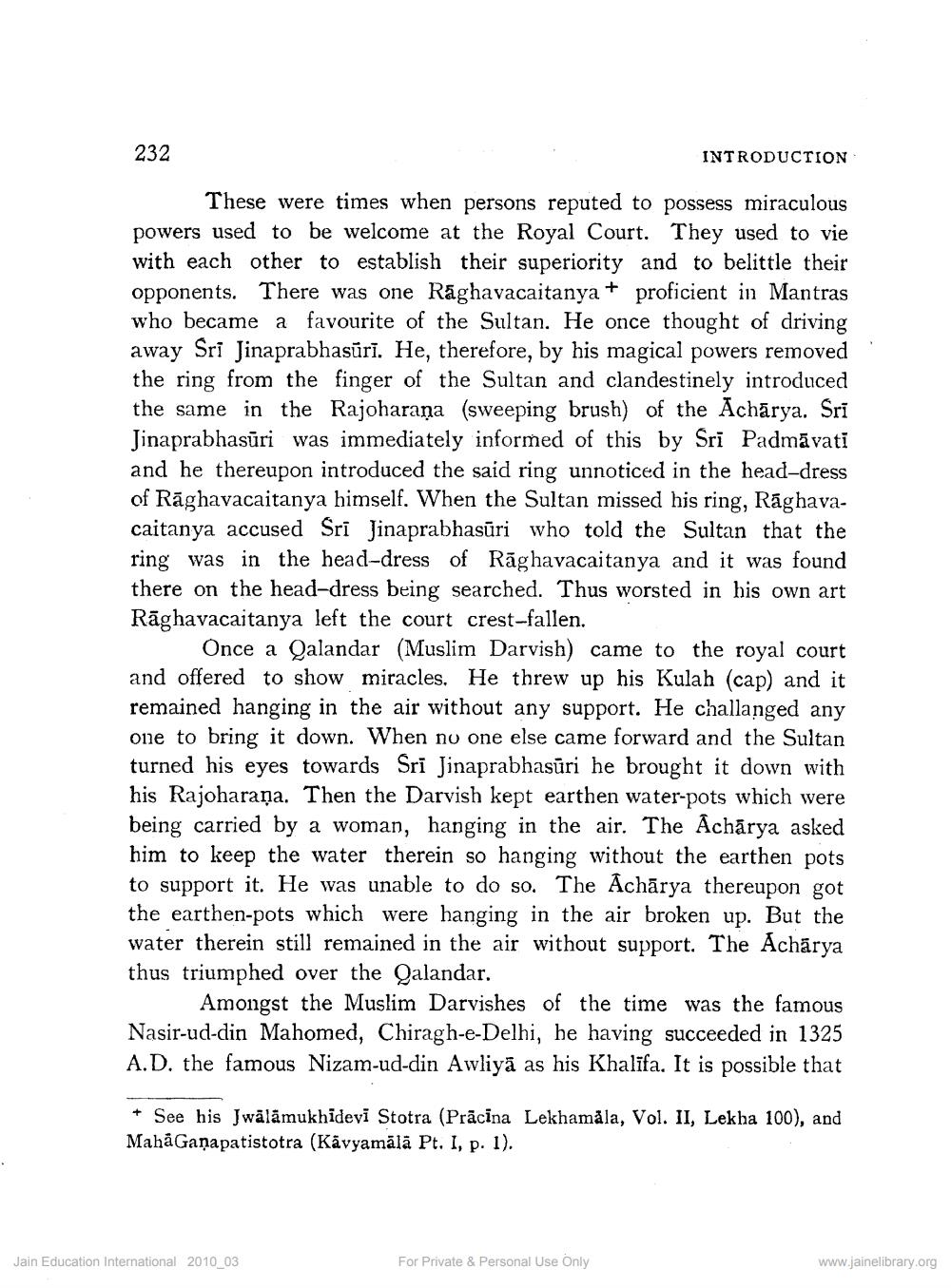________________
232
INTRODUCTION
These were times when persons reputed to possess miraculous powers used to be welcome at the Royal Court. They used to vie with each other to establish their superiority and to belittle their opponents. There was one Raghavacaitanya + proficient in Mantras who became a favourite of the Sultan. He once thought of driving away Sri Jinaprabhasūrī. He, therefore, by his magical powers removed the ring from the finger of the Sultan and clandestinely introduced the same in the Rajoharaña (sweeping brush) of the Achārya. Sri Jinaprabhasūri was immediately informed of this by Sri Padmāvati and he thereupon introduced the said ring unnoticed in the head-dress of Rāghavacaitanya himself. When the Sultan missed his ring, Raghavacaitanya accused Sri Jinaprabhasūri who told the Sultan that the ring was in the head-dress of Rāghavacaitanya and it was found there on the head-dress being searched. Thus worsted in his own art Rāghavacaitanya left the court crest-fallen.
Once a Qalandar (Muslim Darvish) came to the royal court and offered to show miracles. He threw up his Kulah (cap) and it remained hanging in the air without any support. He challanged any one to bring it down. When no one else came forward and the Sultan turned his eyes towards Sri Jinaprabhasūri he brought it down with his Rajoharaņa. Then the Darvish kept earthen water-pots which were being carried by a woman, hanging in the air. The Acharya asked him to keep the water therein so hanging without the earthen pots to support it. He was unable to do so. The Achārya thereupon got the earthen-pots which were hanging in the air broken up. But the water therein still remained in the air without support. The Achārya thus triumphed over the Qalandar.
Amongst the Muslim Darvishes of the time was the famous Nasir-ud-din Mahomed, Chiragh-e-Delhi, he having succeeded in 1325 A.D. the famous Nizam-ud-din Awliyā as his Khalifa. It is possible that
+ See his Jwalamukhidevi Stotra (Prācīna Lekhamāla, Vol. II, Lekha 100), and Maha Ganapatistotra (Kävyamālā Pt. I, p. 1).
Jain Education International 2010_03
For Private & Personal Use Only
www.jainelibrary.org




